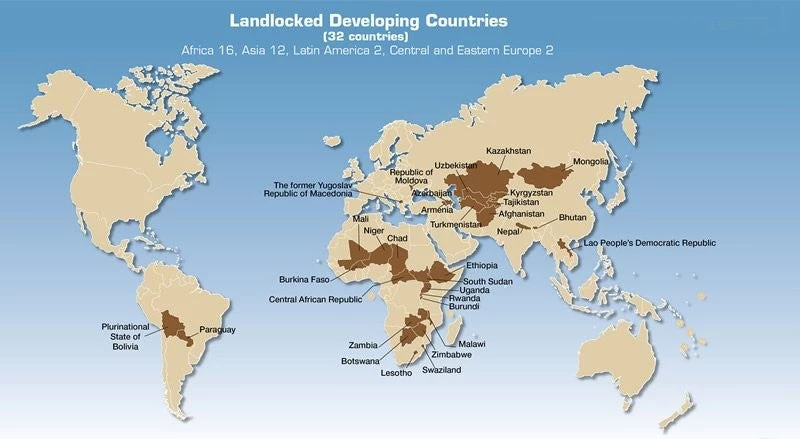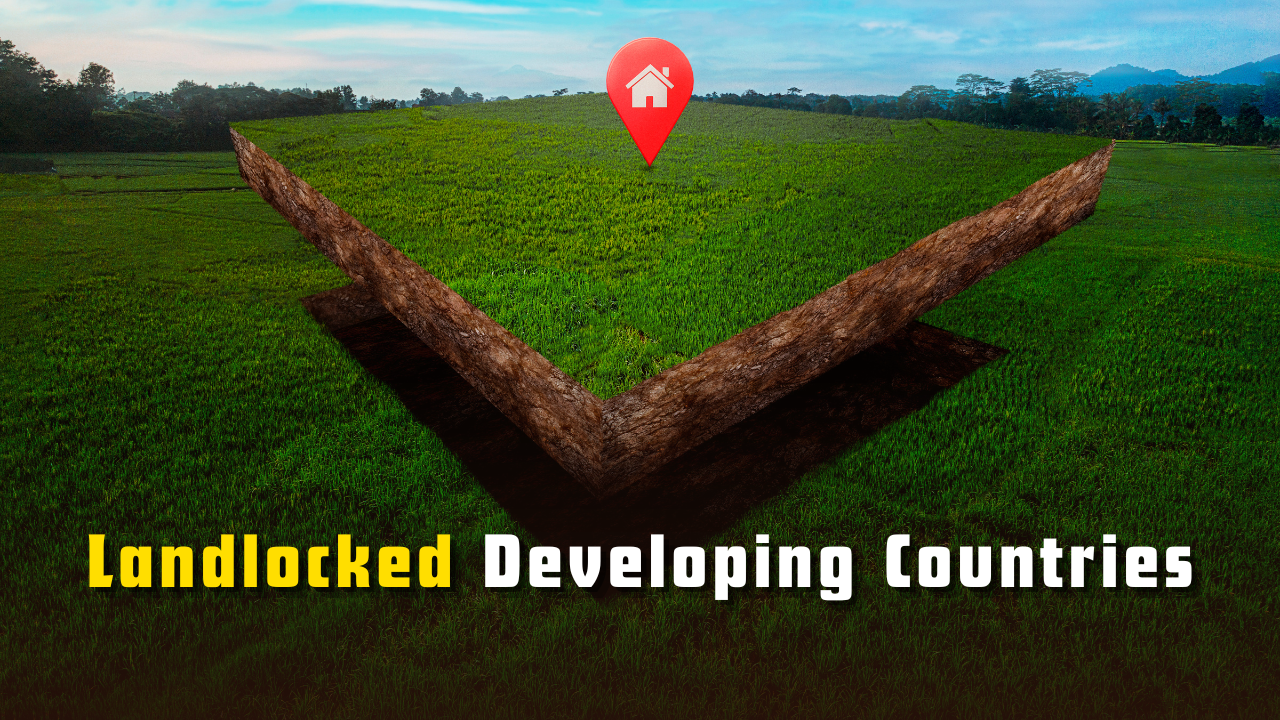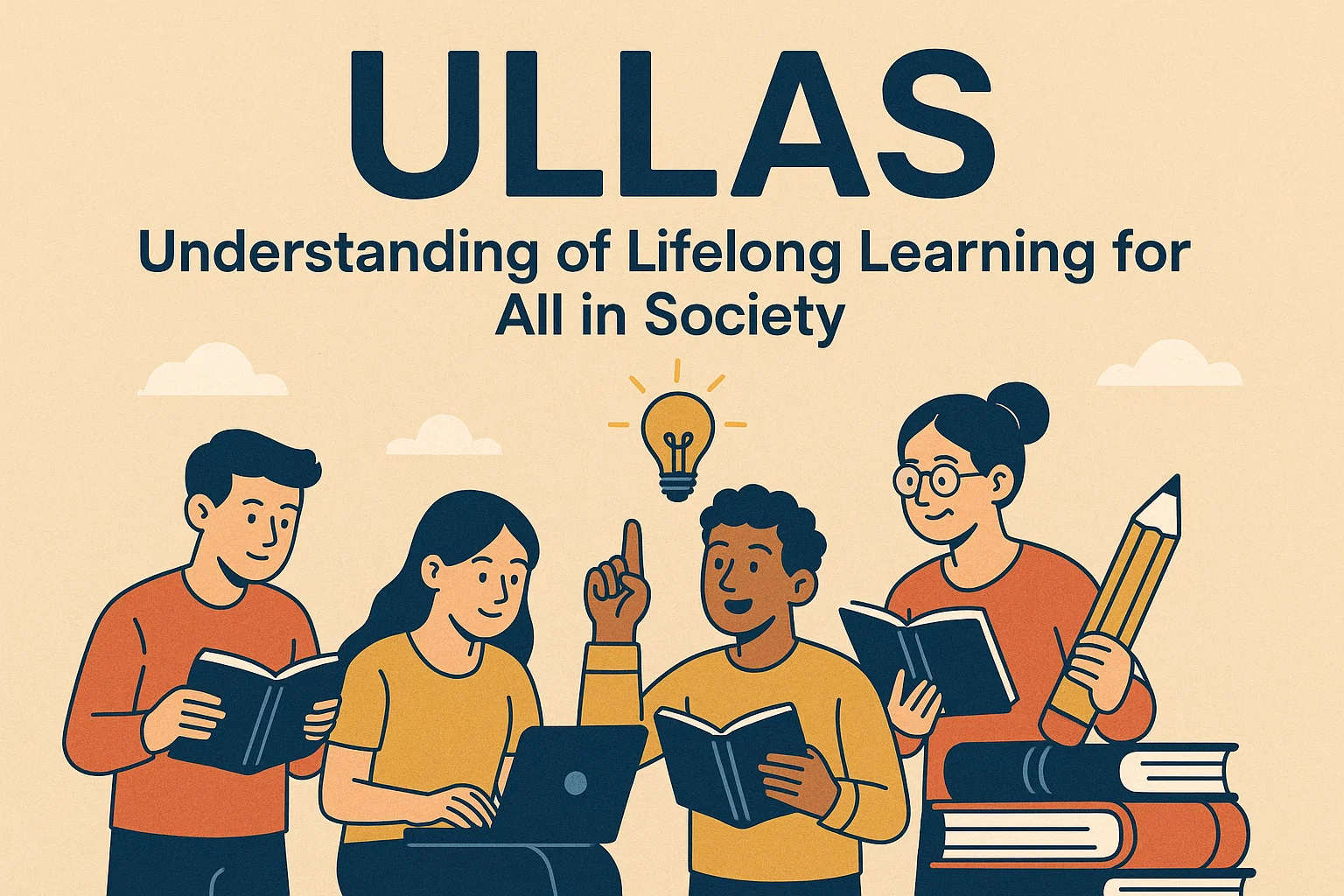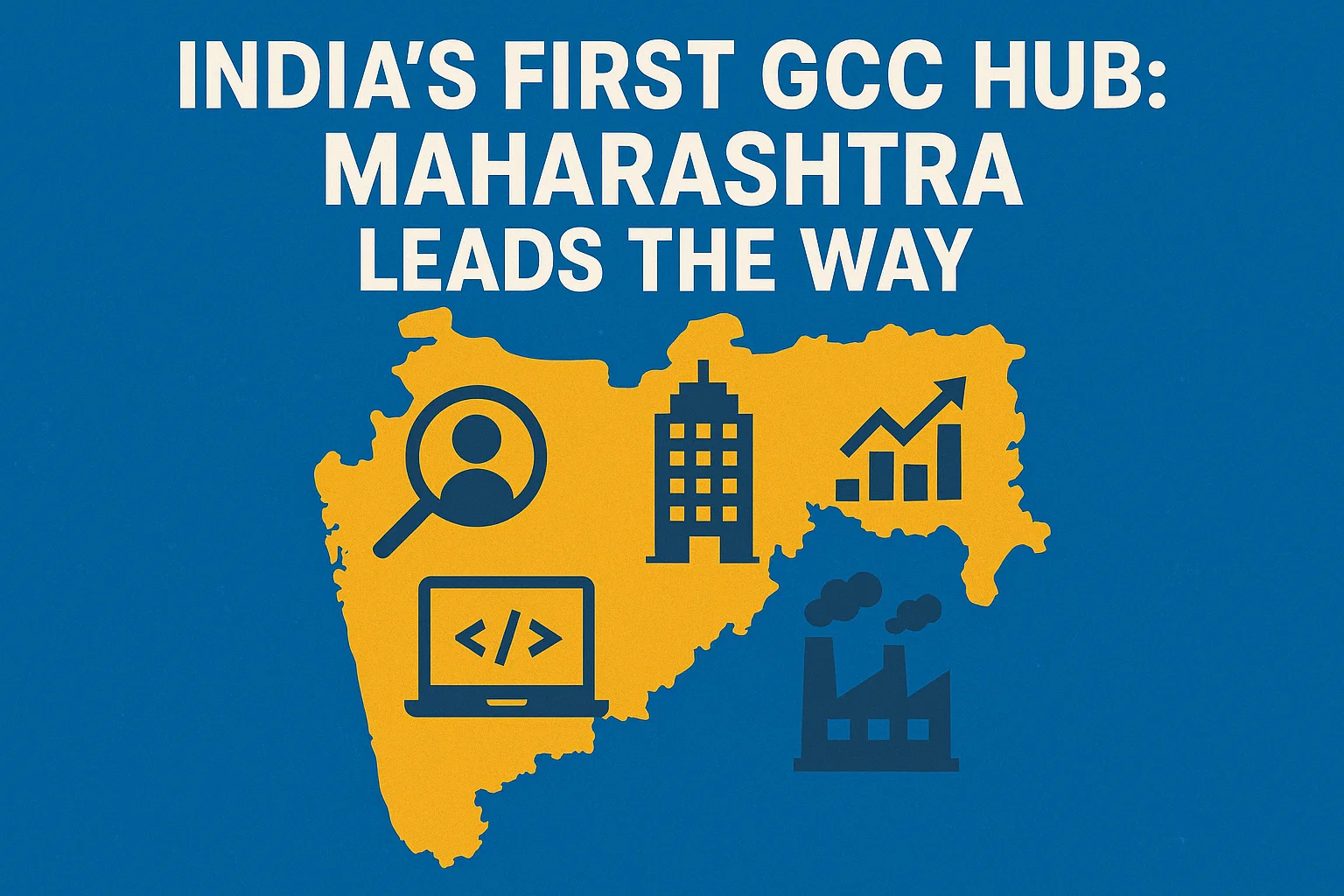Landlocked Developing Countries
Landlocked nations launch climate bloc to influence global policy
Context: At the third United Nations Conference on Landlocked Developing Countries (LLDCs) held in Awaza, Turkmenistan, 32 LLDCs announced the formation of a formal negotiating bloc under the United Nations Framework Convention on Climate Change (UNFCCC).

What is the Landlocked Developing Countries Group?
- Landlocked Developing Countries (LLDCs) are nations that lack direct territorial access to the ocean. They rely heavily on neighbouring transit countries for international trade.
- These countries often face high transportation and logistics costs, limited access to global markets, infrastructure deficits, and economic isolation.
- The LLDC Group advocates for the interests of its member states in global forums. It promotes the implementation of international development agendas.
- The group is currently chaired by Bolivia, with a rotating bureau that includes representatives from countries like Kyrgyzstan, Eswatini, Lao PDR, Rwanda, and Zimbabwe.
What is the significance of the LLDC group?
- Global Policy Influence: Through the UN and other multilateral platforms, the LLDC Group influences global agendas like:
-
- The Vienna Programme of Action (2014–2024)
- The new Programme of Action (2024–2034)
- These frameworks aim to reduce transit costs, improve regional cooperation, and enhance resilience.
- Digital and Technological Empowerment: LLDCs face higher ICT costs and limited access to undersea cables. The group collaborates with organisations like the ITU to promote digital transformation, improve connectivity, and bridge the digital divide.
- Solidarity and Shared Solutions: The LLDC Group fosters regional partnerships and collective bargaining to negotiate better transit agreements and reduce bureaucratic delays. It also facilitates knowledge sharing among member states on best practices in trade, infrastructure, and governance.
- Real-World Impact:
- Countries like Paraguay and Malawi have launched national policies on e-waste and digital regulation with support from LLDC initiatives.
- The group’s efforts have led to early warning systems, spectrum management training, and rural connectivity projects in places like Armenia and Mongolia.
How can the LLDC group initiate different climate change mitigation and adaptation initiatives?
The LLDC Group—though distinct from the Least Developed Countries (LDCs)—can draw inspiration and collaborate with initiatives led by the LDC Group to tackle climate change. These initiatives offer scalable models for climate mitigation and adaptation that LLDCs can adopt or adapt to their unique geographic and economic contexts.
- LIFE-AR (LDC Initiative for Effective Adaptation and Resilience): A long-term, LDC-led framework focused on community-level resilience and inclusive climate planning. LLDCs can replicate LIFE-AR’s principles: justice, equity, participation, and local ownership.
- LDC Renewable Energy and Energy Efficiency Initiative (REEEI): Promotes clean energy access and energy efficiency to reduce emissions and enhance sustainability. LLDCs can use this model to:
-
-
- Invest in solar, wind, and hydro projects
- Improve energy infrastructure in remote areas
- Reduce reliance on imported fossil fuels
-
- LUCCC (LDCs Universities Consortium on Climate Change): A network of universities focused on climate research, capacity building, and South-South collaboration.
- LLDCs can establish similar academic partnerships to train climate scientists, develop localised adaptation strategies, and share best practices across regions.
Subscribe to our Youtube Channel for more Valuable Content – TheStudyias
Download the App to Subscribe to our Courses – Thestudyias
The Source’s Authority and Ownership of the Article is Claimed By THE STUDY IAS BY MANIKANT SINGH





